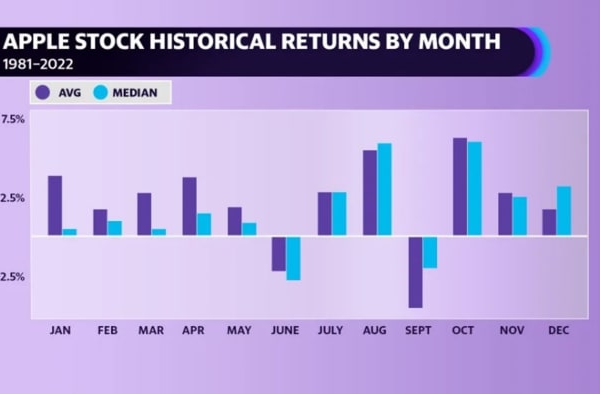Steve Jobs Thoughts on Flash: Why Apple Rejected Flash

In his 2010 manifesto titled “Thoughts on Flash,” Steve Jobs laid bare his concerns regarding Adobe Flash, marking a pivotal point in the ongoing debate of Apple vs. Adobe. Jobs’ critique highlighted numerous Adobe Flash problems, including its notorious battery drain, frequent crashes, and major security vulnerabilities. This candid proclamation was not just a simple dismissal; it foreshadowed the steady decline of Adobe Flash, especially as he declared that iOS devices would completely forgo Flash support. The repercussions from Jobs’ statements sent shockwaves through the tech world, leading to a fierce rebuttal from Adobe’s CEO, but it was clear that Jobs had made his position known. With Adobe Flash finally discontinuing support in 2020, Jobs’ insights have proven more relevant than ever, changing the landscape of web multimedia for good.
Steve Jobs’ reflections on Flash were crucial in the broader narrative of software development and online media functionality. He pointed out several critical shortcomings of Adobe’s famed plugin, which had dominated multimedia content for years. By focusing on issues like security flaws and unsatisfactory performance on mobile platforms, Jobs essentially paved the way for more efficient technologies to fill the void left by Flash. The tumultuous relationship between Apple and Adobe showcases the transformative steps technology companies must take to innovate and adapt. As the tech industry has moved forward, the decline of Flash serves as a stark reminder of the necessity for continuous evolution and the dismissal of outdated technologies.
Steve Jobs’ Thoughtful Critique on Flash
In his pivotal open letter titled “Thoughts on Flash,” Steve Jobs laid bare the numerous critiques he had regarding Adobe Flash’s functionality, performance, and security. He highlighted significant issues like its excessive battery consumption and its propensity to cause system crashes, which marred user experiences on Apple devices. Jobs went further to emphasize that the software was fundamentally incompatible with a mobile-first future, as it failed to leverage touch interactions effectively. His assertion that ‘Flash is no longer necessary to watch video or consume any kind of web content’ marked a turning point in how web technologies were perceived and utilized.
The ramifications of Jobs’ open letter extended beyond personal opinion; it crystallized a growing sentiment within the tech community that Adobe Flash was no longer fit for modern application development. By signaling Apple’s refusal to support Flash on iOS devices, Jobs catalyzed a movement that became instrumental in ushering in HTML5 as a dominant standard. The clarity and decisiveness of his words not only resonated with developers but also set the stage for a broader decline of Flash, which would soon face mounting criticism and alternative solutions.
The Decline of Adobe Flash: A Clear Path
As a consequence of Jobs’ bold statements, the decline of Adobe Flash became starkly evident. Following the release of his letter, tech giants began reevaluating their reliance on this once-standard plugin. Flash’s inability to adapt to the burgeoning mobile landscape signified a critical setback for Adobe. Developers and businesses alike began shifting towards more efficient, light-weight options like HTML5, which offered better performance across devices without the security vulnerabilities that plagued Flash.
This shift was further compounded by public sentiment and industry experts rallying to Jobs’ viewpoint, which led to increasing support for the removal and replacement of Flash on various platforms. Over the years, what began as a ubiquitous web plugin faded into obsolescence, culminating in Adobe’s announcement to discontinue Flash by 2020. Ultimately, Jobs’ critique acted as a catalyst, expediting the software’s decline, as more users and businesses realized the potential pitfalls of clinging to a fading technology.
Apple vs Adobe: A Pivotal Moment in Tech History
The conflict between Apple and Adobe over Flash symbolized a monumental clash between two differing ideologies in tech innovation. While Apple was advocating for a streamlined, touch-centric design philosophy, Adobe represented a legacy approach that was increasingly being seen as outdated. Jobs’ vehement refusal to integrate Flash on Apple devices was not merely a personal vendetta; it reflected a strategic vision for the future of mobile computing, prioritizing performance and user experience above all else.
As tensions escalated, Adobe’s efforts to defend Flash were met with critical skepticism from the tech community. Many observers noted that Adobe’s misuse of resources in trying to salvage Flash only indicated the argument’s futility. As Jobs had predicted, Flash’s days were numbered, leading to a broader movement away from plugins that required complicated installations and introduced security flaws. The battle lines drawn in this contest highlighted a critical evolutionary moment for both companies, setting a precedent for how software and web standards would be approached in the years to follow.
The Aftermath of Jobs’ Open Letter
The aftermath of Steve Jobs’ open letter reverberated throughout the tech industry. Even after Adobe attempted to counter Jobs’ claims, the damage had been done. Developers began to abandon the plugin in droves, seeking alternative options that better suited evolving technology demands. By condemning Flash, Jobs not only propelled Apple to the forefront of mobile innovation but also opened the door for more secure, efficient web technologies that would ultimately define modern web browsing.
In the years that followed, the reluctance to continue with Flash became a mainstream consensus. As reported, by the time Adobe officially phased out Flash in December 2020, most users had already moved on, with many websites stripping the software from their architectures. The legacy of Jobs’ critique remained palpable, serving as a reminder of the swift shifts in technology and the importance of adaptation. His pronouncement on Flash not only helped ensure a more secure web but also emphasized the value of speaking out against technological shortcomings.
The Legacy of Steve Jobs’ Perspective
Reflecting on the legacy of Steve Jobs’ perspective on Flash, it’s clear that his foresight regarding technology trends was significant. The push against Adobe Flash can be seen as part of a larger narrative in which visionary leaders call out issues before they escalate. His insights not only signaled a move towards more open standards like HTML5, but they also underscored a growing awareness of the necessity for security and performance in web design.
Today, many in the tech community regard Jobs’ refusal to support Flash as pivotal in shaping the modern internet landscape. Reflecting on this historical moment, we can appreciate the role of decisive leadership in fostering innovation and advancing toward a future with fewer constraints. Jobs’ critiques continue to resonate in discussions about software development best practices, indicating that user experience and security should always take precedence in technology.
Adobe Flash Problems: Understanding the User Experience
Adobe Flash recorded numerous problems that became apparent through public usage and expert analysis. Many users frequently experienced browser crashes, system slowdowns, and excessive battery drain during Flash-heavy applications, which led to dissatisfaction among users. These issues were not simply anecdotal; they were systemic flaws in the plugin’s architecture that rendered it unsuitable for a rapidly advancing digital landscape.
Furthermore, the situation was exacerbated by security vulnerabilities that were continually emerging within Flash. The frequent patches needed to address these weaknesses showcased the software’s inherent instability and lack of robustness. As users became increasingly aware of these problems, the demand for alternatives became evident. Jobs’ critique played a crucial role in bringing these concerns to light, prompting a necessary shift towards safer, more efficient web solutions.
Critique and Response: Jobs vs Narayen
The confrontation between Steve Jobs and Adobe CEO Shantanu Narayen following the open letter was emblematic of the wider industry debate regarding Flash’s relevance. Narayen’s attempts to refute Jobs’ points were met with skepticism, as many in the technology sphere had already witnessed and felt the operational shortcomings of Flash firsthand. Rather than galvanizing support for Flash, Narayen’s arguments revealed the rift between legacy software thinking and the forward momentum of mobile technology.
Ultimately, the exchange highlighted how critical the user experience was becoming within software development discussions. Jobs’ decisive stance against Adobe revealed a preference for streamlining functionality and reducing security risks, which sharply contrasted Narayen’s insistence on defending the status quo. This divide illustrated not only the struggle between two corporate giants but also the shifting values within the tech world, where compelling user experiences had begun to take precedence over entrenched technologies.
A Defining Moment for Web Technologies
April 29, 2010, marked a defining moment in the evolution of web technologies. Steve Jobs’ open letter effectively foreshadowed the decline of Adobe Flash and ushered in a new era of modern standards for web development. Flash, which had previously dominated multimedia online, faced outright rejection from one of the industry’s leaders. The implications of Jobs’ critique thus reverberated through developer communities, prompting a re-examination of legacy systems and vocal support for emerging technologies.
The shift initiated a broader movement that prioritized speed, efficiency, and security in web applications, resulting in a rapid adoption of alternatives like HTML5. Jobs’ critique not only highlighted existing problems but also inspired innovation in creating more reliable web solutions. Consequently, the immediate fallout from his criticisms led to the gradual phasing out of Flash, making way for a more streamlined and user-centered digital experience. This pivotal moment significantly shaped the trajectory of web development for years to come.
The Forgotten Flash: A Lesson for Tech Innovators
Today, Adobe Flash is a largely forgotten tool within the vast digital landscape it once dominated. Its decline serves as a stark reminder of the pace at which technology can change and how innovation requires flexibility and foresight. The narratives surrounding Jobs’ critique of Flash exemplify how essential it is for tech leaders to recognize the limitations of their products and respond proactively to user needs, paving the way for future advancements.
As the tech industry reflects on the legacy of Adobe Flash, the fall of this once-revered technology highlights the critical need for continuous evolution and improvement. The swift rejection of Flash reiterates that good user experiences are integral to success. Apple’s decisive move away from Flash, championed by Jobs’ open letter, helps frame discussions around future tech innovations, emphasizing the importance of adaptability and user-centric design in building sustainable solutions.
Frequently Asked Questions
What were Steve Jobs’ main criticisms of Adobe Flash in his ‘Thoughts on Flash’ letter?
In his ‘Thoughts on Flash’ letter, Steve Jobs criticized Adobe Flash for several reasons. He stated that Flash drained battery life, caused computer crashes, and posed significant security risks. Jobs also noted that Flash was not optimized for mobile devices, failing to support touch interactions adequately. Overall, he declared that Flash was no longer necessary for enjoying web content.
How did Steve Jobs’ critique of Flash impact its usage on iOS devices?
Steve Jobs’ critique in ‘Thoughts on Flash’ directly impacted the usage of Flash on iOS devices, as he ultimately decided that iOS would never support Adobe Flash. This decision led to a significant decline in Flash’s relevance, as the popularity of iPhones and iPads increased, diminishing the need for Flash-based content.
What were the consequences of the Apple vs Adobe conflict initiated by Jobs’ ‘Thoughts on Flash’?
The conflict initiated by Steve Jobs’ ‘Thoughts on Flash’ letter had far-reaching consequences, including the public deterioration of Adobe’s reputation. Although Adobe’s CEO Shantanu Narayen disputed Jobs’ claims, the critique contributed to Flash’s eventual decline and its phased removal from most websites, ultimately resulting in Adobe discontinuing Flash in January 2021.
Did Adobe respond to Steve Jobs’ critique of Flash when he published his ‘Thoughts on Flash’?
Yes, Adobe responded to Steve Jobs’ critique of Flash following the publication of ‘Thoughts on Flash.’ Adobe CEO Shantanu Narayen refuted Jobs’ allegations, arguing that Flash did not significantly impact battery life and that crashes were often due to Apple’s own software issues. However, this response did little to change public perception or address the underlying concerns raised by Jobs.
What ultimately led to the decline of Adobe Flash as highlighted by Steve Jobs’ ‘Thoughts on Flash’?
The decline of Adobe Flash was significantly accelerated by Steve Jobs’ ‘Thoughts on Flash’ letter, which outlined key issues such as its high resource consumption, security vulnerabilities, and poor mobile performance. This critique coincided with rising trends favoring HTML5 and mobile optimization, and Adobe eventually announced its plan to eliminate Flash by 2020, officially discontinuing it in January 2021.
Why did Steve Jobs believe Flash was unnecessary for web content?
Steve Jobs believed Flash was unnecessary for web content due to the rise of modern web standards like HTML5, which provided better performance, security, and compatibility across devices. In his ‘Thoughts on Flash’ letter, he argued that users could watch videos and consume content without relying on Flash, thereby rendering the plugin obsolete.
What was the public response to Steve Jobs’ ‘Thoughts on Flash’?
The public response to Steve Jobs’ ‘Thoughts on Flash’ was mixed, with technology commentators either supporting his criticisms or opposing them. Over time, however, many came to see Jobs’ concerns as justified, especially as Flash’s usage waned and more sites adopted HTML5, affirming Jobs’ foresight about the future of web technologies.
How did the tech industry view Adobe Flash following Jobs’ ‘Thoughts on Flash’?
Following Jobs’ ‘Thoughts on Flash,’ the tech industry began to view Adobe Flash critically. Many developers echoed Jobs’ concerns about security and performance, leading to a broader movement away from Flash. The industry’s pivot toward open standards further marginalized Flash, culminating in its official discontinuation by Adobe in 2021.
What significance did Steve Jobs’ ‘Thoughts on Flash’ have for web development?
Steve Jobs’ ‘Thoughts on Flash’ played a crucial role in transitioning web development toward more efficient, secure, and mobile-friendly technologies. His concerns helped catalyze the adoption of HTML5 and other modern web standards, shaping a more open and inclusive internet environment without the limitations that Flash imposed.
What were the implications of Adobe discontinuing Flash in 2020 after Jobs’ critiques?
The implications of Adobe discontinuing Flash in 2020, after the critiques made by Steve Jobs in ‘Thoughts on Flash,’ included a significant shift in how web content is delivered. The discontinuation marked the end of an era dominated by Flash, promoting the adoption of newer technologies and improving overall web performance, security, and accessibility.
| Key Points |
|---|
| Steve Jobs published “Thoughts on Flash” defending Apple’s decision not to support Flash on iOS devices. |
| Jobs criticized Flash for draining battery life, causing crashes, and having security vulnerabilities. |
| Jobs claimed Flash was not needed for video or web content anymore, highlighting better alternatives. |
| Adobe’s CEO, Shantanu Narayen, disputed Jobs’ claims but acknowledged the growing tension between the companies. |
| The public response to Jobs’ letter was mixed, with some supporting his view while others defended Flash. |
| Ultimately, Adobe discontinued Flash in January 2021, acknowledging Jobs’ concerns. |
Summary
Steve Jobs’ thoughts on Flash fundamentally reshaped the conversation around web standards and mobile technology. His candid letter outlined critical issues associated with Adobe Flash, emphasizing its shortcomings in performance and security, particularly on mobile devices. This bold stance not only initiated the decline of Flash but also highlighted the importance of innovation and adaptability in technology. As we look back at the aftermath of Jobs’ open letter, it’s clear that his foresight was pivotal in steering the tech industry towards more efficient and secure alternatives.
You may also like

iOS App Store Success: A Milestone in Digital Distribution


First Email from Space: The Macintosh Portable’s Legacy
Archives
Calendar
| M | T | W | T | F | S | S |
|---|---|---|---|---|---|---|
| 1 | 2 | 3 | 4 | 5 | 6 | 7 |
| 8 | 9 | 10 | 11 | 12 | 13 | 14 |
| 15 | 16 | 17 | 18 | 19 | 20 | 21 |
| 22 | 23 | 24 | 25 | 26 | 27 | 28 |
| 29 | 30 | 31 | ||||